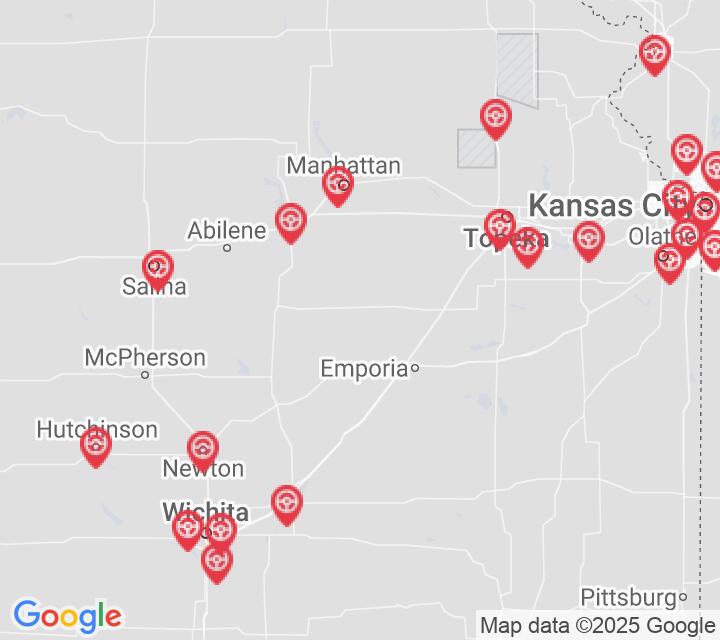2025 Kansas Permit Test 6
The following questions are from real DMV written tests. These are some of the actual permit questions you will face in Kansas. Each permit practice test question has three answer choices. Select one answer for each question and select "grade this section." You can find this button at the bottom of the drivers license quiz. For a complete list of questions and answers for Kansas please visit https://cheat-sheets.dmv-written-test.com/en/kansas/car.
Number of Tests
Number of Question
Passing Score
17. This sign means:

Explanation
Warning signs are usually yellow with black markings. They alert you to conditions that are immediately ahead. This sign warns that the roadway is slippery when wet.
18. When driving on gravel or dirt roads:
Explanation
Your tires do not have as much traction on loose gravel and dirt roads as they do on concrete and asphalt roads. When driving on gravel or dirt, you must slow down. It will take you much longer to stop and it is much easier to skid when turning.
19. Vehicles stopped behind a school bus with its red lights flashing must remain stopped until:
Explanation
When a school bus is flashing its red lights and has its stop arm extended, motorists must come to a full stop until the lights are turned off, the stop arm is withdrawn, and the bus begins moving again.
20. You should signal continuously while turning because it:
Explanation
You should always signal when turning, changing lanes, slowing down, or stopping so that other drivers, motorcyclists, bicyclists, and pedestrians will know your intentions.
21. Which of the following are factors commonly contributing to traffic crashes?
Explanation
Driving above the speed limit, driving too far below the speed limit, and driving too fast for conditions are all actions that commonly contribute to traffic accidents. Always drive with the general flow of traffic, within legal speed limits.
22. You may be able to identify an aggressive driver by:
Explanation
While driving, you should remain aware of the actions of surrounding drivers. If you notice an aggressive driver nearby making erratic or improper lane changes, you should not challenge them. The safest way to handle an aggressive driver is to get out of their way.
23. Which lane must you be in before making a left turn from a one-way street?
Explanation
When making any turn, turn from the lane closest to the direction you wish to travel into the first available legal lane. If you are making a left turn from a one-way street, this means that you would make the turn from the lane nearest to the left curb.
24. When entering an interstate highway, you should:
Explanation
Rather than stopping (as you would when entering other roads), you must use the merging or acceleration lane to speed up and smoothly merge with fast-moving traffic already on the interstate.
25. The traditional mirror setting:
Explanation


